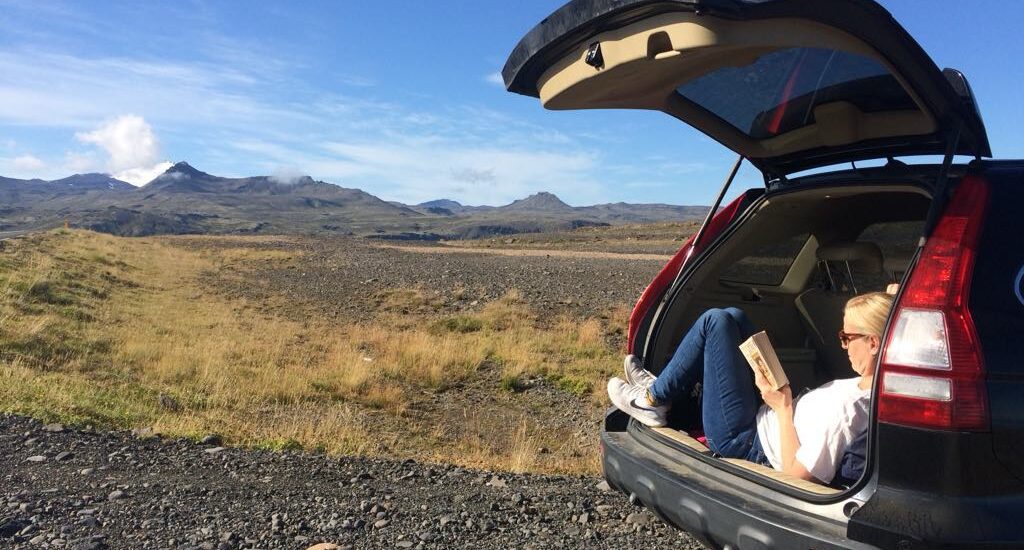Although I work with art and culture on a daily basis, I don’t always get the opportunity to work closely with art itself – in a direct, creative collaboration with artists. That privilege I’ve had recently, serving as the curator for this year’s summer exhibition at the Nordic House: Time After Time, featuring five Nordic artists – Anastasia Ax, Felipe de Ávila Franco, Jussi Kivi, Saara Ekström, and Sandra Mujinga.
Working with artists in this way is incredibly rewarding. It’s in these kinds of collaborations that you are reminded of the unique perspectives, experiences, and knowledge that artists carry – and how essential it is that they are given space in the conversation about our present, our future, and the challenges we face together.
But the first seed for Time After Time was planted long before – five years ago, when Saara Ekström was in Iceland filming material for her piece Geopsyche. I assisted her at the time as a location scout and driver, lying in the trunk of the car reading while she filmed stones, mountains, and bubbling geothermal pools with her 16mm film camera.
When I later saw the finished video work presented at Helsinki Kunsthalle in the summer of 2023, I couldn’t shake the feeling that it also needed to be shown here, in Iceland. Not as a solo piece, but as part of a group exhibition – one in which time, especially deep time, would be at the center.
I began inviting artists whose works explore these themes, from different angles, through varied expressions and backgrounds. One of them is Anastasia Ax, whose work merges sculptural and performative elements. Using her own body as a tool, she initiates a process of transformation that is later completed by nature itself.
For Time After Time, she created a new work, Settlers (Reykjavik), which is presented outside the Nordic House, above ground. It serves both as an entry point and a conclusion to the exhibition, which unfolds in the underground gallery space and centers around the human relationship to nature – visibility and invisibility, presence and absence.
Jussi Kivi takes us on an explicitly subterranean journey in his photographs, documenting his exploration of abandoned industrial sites. Felipe de Ávila Franco allows us to encounter the sun in two pieces that, despite their poetic form, explore our complex relationship with energy. In Sandra Mujinga’s video installation, Amnesia? Amnesia?, We meet a character who, through a contemplative and inviting monologue, reflects on what it means to exist in the dark.
Time After Time quietly honors something greater than ourselves. In a world that so often centers the human, these works invite us to look outward, toward broader scales of time, space, and existence. They are not overly didactic or explanatory, but instead open up space for emotion, for thought, for personal interpretation.
The exhibition offers a space to pause, reflect, and feel part of something greater.
For me, Time After Time has also been exactly that – a space to step into, to see, listen, and think together.
